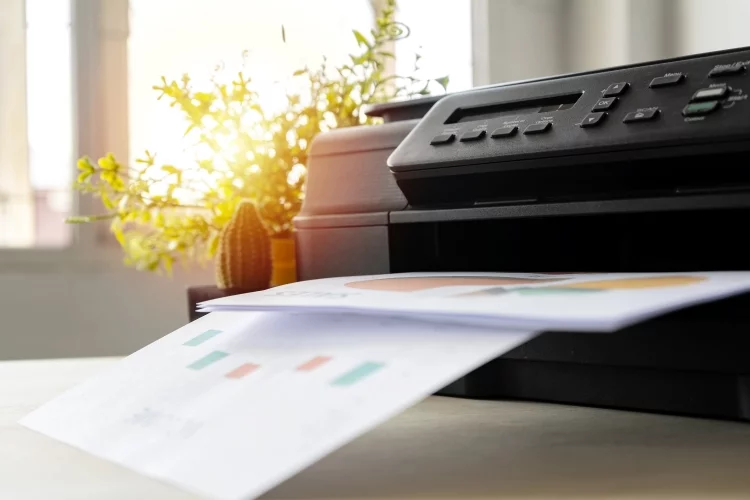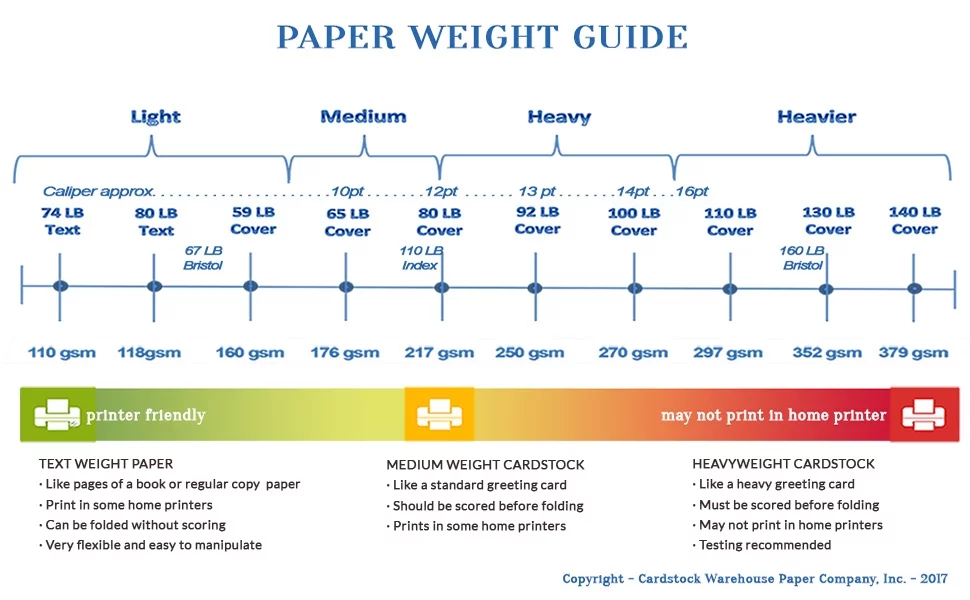How Big Is a Printer Paper?
by Karen Jones
Printer papers can come in different sizes and dimensions but one thing you need to know is the fact they have acceptable standards. The standard of a printer paper is usually based on certain measurement metrics, which involve measuring its size in inches. The talk of how big a printer paper can be is an interesting discussion, considering there are different types of files we print regularly. For instance, the paper used for printing a document is entirely different from the paper used to print image files. So, it's important to know paper varieties.
Contents
Printers are specially designed to take different sizes of printer papers. So, when talking about how big a printer paper can be, the focus is on the size and thickness of the paper. The weight of the pack of paper also matters because printer papers are of different types, which means the weight of a bond will vary in pounds.
In this guide, we will take a look at how big a printer paper can be, which involves introducing you to different types of paper sizes, their dimensions, weight, and what they are used for.
Standard Size of a Printer Paper
There is a standard paper size that works with most printers and is acceptable across the world.

The dimension of a standard printer paper size is "8.5 inches by 11.0 inches". What this means is that the dimension of the horizontal side of the paper is 8.5 inches while the vertical side of the paper is 11.0 inches. They are in letter-size format and are mostly used to print documents in the landscape. This is the basic standard for printer papers in the United States and nearby countries. However, countries in other parts of the world accept the standard A4 (297mm by 210 mm) printer paper. The standard printer paper size is mostly used for official purposes.
Furthermore, the main reason why the letter-size printer paper is seen as the standard size or default size is that most printers are designed to take papers with "8.5 inches wideness and 11.0 inches length". If a printer paper is too wide or long, it will not fit into a regular printer, and if the paper is too narrow or short it might be moving from side to side during printing process.
The standard printer paper size can come in different types and dimensions such as;
- Letter-size Printer paper
- Legal-size Printer paper
- Ledger Printer Paper
- Half Letter-size Printer Paper
Here is a table that shows the different dimensions and uses of a standard printer paper size;
| Wideness (inches) | Length (inches) | Aspect Ratio | Application | |
| Letter-size Paper | 8.5 | 11.0 | 1:1.2941 | Letters, Flyers, and Brochures |
| Legal-size Paper | 8.5 | 14.0 | 1:1.6471 | Flyers and Brochures |
| Ledger Paper | 11.0 | 17.0 | 1:1.5455 | Flyers and Brochures |
| Half Letter-size Paper | 8.5 | 5.5 | 1.1.5455 | Flyers and Invitation cards |
The Thickness and Weight of a Printer Paper

The thickness of a printer paper and the weight of a bond of paper are major factors you need to consider when trying to determine how big they are. The thickness of printer paper can be difficult to measure due to how thin they appear, so they are measured in sheets and reams.
The standard system of thickness measurement involves measuring based on the weight of 500 sheets of paper, which is equivalent to one ream of paper. A ream of printer papers consists of 500 sheets, which means the weight of the ream is determined by the thickness of each sheet.
For instance, the weight of a ream of thin papers will be lesser than the weight of a ream of thick papers. Printer papers are cut differently and their weight is measured in pounds.
There are different printer paper types based on thickness and weight;
1. Text Printer Paper
2. Bond Printer Paper
3. Book Printer Paper
4. Index Printer Paper
5. Tag Printer Paper
6. Cardstock Printer Paper
1. Text Printer Paper
These are lightweight paper used to print text files for commercial use. They come in different weights that range from 50-100 pounds; 50 pounds, 60 pounds, 70 pounds, 80 pounds, 90 pounds, and 100 pounds. They are mostly used for general business printing purposes.
2. Bond Printer Paper
This type of printer paper is one of the most popularly used printer papers in companies and organizations. They are slightly heavier than text papers because they contain cotton and fiber. The texture of bond papers gives them a nice feel and luxurious appearance which is why they are mostly used to print official resume documents and formal correspondence.
Bond papers are of different sizes and they come in different weights. Their weight is mostly measured from 16 pounds, 20 pounds, 24 pounds, 28 pounds, 32 pounds, to 36 pounds.
3. Book Printer Paper
A book printer paper type is mainly used for printing books and stationaries. A book paper is cut in different sizes which makes their weight vary. They range from 30 pounds to 115 pounds.
Book papers are also used to print magazines and catalogs.
4. Index Printer Paper
The index printer paper is a specially designed type of cover paper used to print postcards and index cards. They have a sturdy design and are also used to print flyers, folders, and brochures.
The weight of an index paper ranges from 90 pounds, 110 pounds, 120 pounds to 140 pounds. Due to their high stiffness quality and thickness, they are used to produce greeting cards too.
5. Tag Printer Paper
A tag paper as the name implies is used to print tags and labels that you will find on products in supermarkets and fashion stores. Tags are those small thick papers used to indicate the price tag of items and products in stores. They are also used as signs because of their sturdy look.
Tag papers are very thick and the thickness can come in different weight sizes such as 100 pounds to 200 pounds.
6. Cardstock Printer Paper
This is a special printer paper that varies in terms of style, color, and weight. A cardstock paper is quite heavy and thicker than regular copy or office printer papers. The thickness of cardstocks comes in different weights that range from 60 pounds, 80 pounds, 110 pounds to 120 pounds.
Cardstock is also called cover paper because of how they are designed. They look like regular light cardboard papers because of their stiffness and are mostly used to produce greeting cards, business cards, and scrapbooks. You can determine the thickness of the cardstock by weight.
Factors to Consider When Buying a Printer Paper
Here are few factors you need to consider when buying a printer paper;
Put your budget into consideration
It is important to buy printer papers within your budget because the price of papers varies.
The type of project you want to print
You need to put into consideration your purpose for printing. Are you printing a bank statement or printing a business card? Whatever purpose you have in mind, you need to understand that printer papers are designed for different use. So, ensure you buy the paper that fits.
The quality of a printer paper
If you want to maintain the quality of the image you want to print, you should purchase printer papers of good quality. The print quality of your printer also plays a major role which is why people install additional printing software on their computer systems.
The image you will like to project
This is an important factor to consider when buying printer papers. You can not use text paper to print flyers or use cover papers to print regular official documents. The image you want to project matters a lot. So, ensure you don't buy printer paper for the wrong use.
The paper thickness and weight
The thickness and weight of a paper are one of the major factors to consider. It is the major talking point of the article because it helps us determine how big a printer paper is.
The size of the printer paper in pixels
The quality of the image you are printing on paper matters, so one of the best ways to bring out the best quality in your printing is to analyze the size of your printer paper in pixels. Just like image resolution on computer or tv screens, image resolution on a printer paper is measured in "pixel per inches". The size of a printer paper in a pixel is also influenced by the printer settings.
YouTube Video Links
Conclusion
In today's world, printer papers are designed in different shapes and sizes. How big they are is mainly determined by their thickness and weight, which are useful paper qualities needed if you work in big organizations that deal in printing.
It is important to know the right type of printer paper to buy for your business and personal use. Paper types have different attributes due to their texture, which is a major reason why they are used for different purposes. Terms such as "cover, text, bond, or index" describes the texture of a printer paper, which in turn determines the weight and how big they are.
The weight of a printer paper is mostly measured in "grams per square meter" known as GSM.
So, if the GSM of a particular paper becomes higher, the thickness and weight become bigger.
Kindly share your thoughts about this article in the comment section.
 |  |  |  |

About Karen Jones
Karen Jones has always been a writer at heart. As a freelance writer and social media marketing consultant for the last decade, she's honed her skills in crafting catchy and interesting articles that reel in readers. She also enjoys traveling, which is where she gets most of her ideas for her writing. In fact, if you can't find Karen around her friends and family, it's likely because she's holed up in her home office working on refining her writing composition and printing press!
Thoughts on "How Big Is a Printer Paper?"
 |  |  |  |
Get some FREE Gifts. Or latest free printing books here.
Disable Ad block to reveal all the secret. Once done, hit a button below
 |  |  |  |